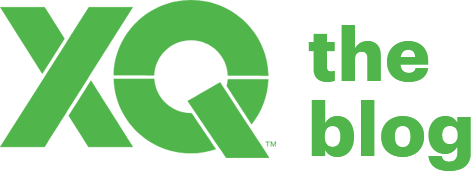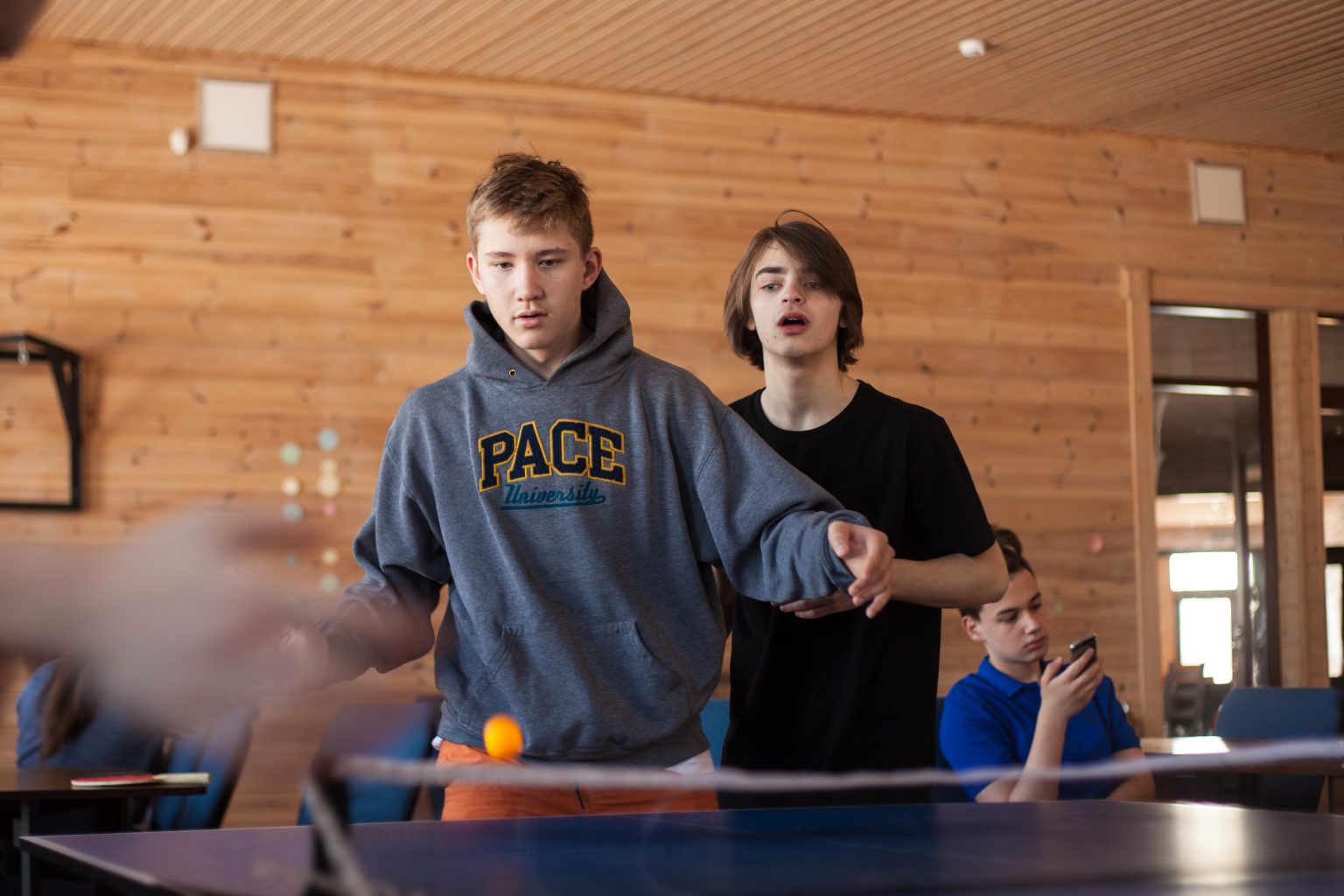A 4-PART SERIES ON DEVELOPING CARING AND TRUSTING RELATIONSHIPS WITH STUDENTS WHILE SCHOOLS ARE CLOSED (PT. II)
You may need to hear this reminder: We can accomplish hard things. All of us. And your students can do hard things. Every single one of them.
In fact, students need you to believe in their capacity to do extraordinary and challenging work—so powerfully, so transparently—so that they never doubt their ability to make impactful, positive change in this world. After all, it is our students who are now entering an era of ambiguity, ready to rise up as our “sense makers” and creative problem-solvers and build a more just and equitable future.
Now, repeat this mindset to yourself, or send it to an educator friend who might need to be reminded.
Because at the end of the day, there is an inextricable connection between rigorous learning and caring relationships. When we know our students well enough to push them to the edge of their proximal zone of development–we see them succeed in ways we never imagined. When we come together as school communities to help our students envision, measure, and achieve ambitious goals—we see our students fly into their vast and boundless potentials.
In this four-part series, we will continue to explore themes that help us understand how to build powerful connections for learning to meet students where they are, including those who are academically behind or vulnerable to falling behind, and help them achieve to their highest potential. These insights come from our discussions with XQ schools across the country, and we wanted to share!
This week, we’ll focus on developing powerful mindsets to help learners understand and achieve their fullest, creative potentials. We’ll answer:
- How can pervasive trust and belief in a learners’ ability help them achieve at the highest levels? What does that look like in a virtual environment?
- How do we create online learning environments that allow students to take risks and encourage students to learn from mistakes?
Now, let’s get started!
HOW CAN PERVASIVE TRUST AND BELIEF IN A LEARNERS’ ABILITY HELP THEM ACHIEVE AT THE HIGHEST LEVELS? WHAT DOES THAT LOOK LIKE IN A VIRTUAL ENVIRONMENT?
Across the country, XQ schools are creating learner-centered environments that value, trust, and affirm their students’ abilities. These schools know that in order to help students achieve at their highest levels they need their educators to believe in their academic capabilities, because teacher expectations and beliefs about students matter. XQ schools do this by challenging students with learning experiences that meet them where they are, while also providing students with high-quality feedback and intentional support to help students craft and meet their ambitious, long-term goals.
From its very inception, Washington Leadership Academy (WLA)—located in Washington, D.C– has held high expectations for all of their students who are mostly students of color—a group that has been proven time and time again to feel ‘less valued’ by teachers and as a result, less likely to get critical feedback about how to improve. By challenging students with a rigorous course load consisting of high-level STEM classes and four-years of computer science, WLA trusts that students will succeed within a demanding environment and achieve beyond their perceived limitations.
Once shelter-in-place began, the WLA team took a step back to ensure that they were not only prioritizing their student’s basic physiological needs through free-and-reduced-price lunch but were also staying vigilant in collecting important data about their students’ learning trajectories. Amidst fears of learning losses from the ‘coronavirus’ slide, WLA is tackling a comprehensive, data-driven approach to document student engagement, growth on assessments, and state standards being covered (or missed) for each student during remote learning:
“If we don’t know what students are learning, we don’t know how to better support them,” says Christina Moore, Director of Student Services at WLA. “We want to know specific gaps that may be forming for each student in remote learning so that when we start the next year, we can hone in on those areas.” Since belief in students is often not enough, WLA is seeking a deeper understanding of student gaps to create differentiated small groupings and intensive 1:1 support to provide students with data-driven feedback. Moreover, when students’ unique academic needs are scaffolded and met, students can see their abilities to become self-efficacious learners, even at home.

Another example of WLA’s continued belief in their students’ vast potentials comes from the school’s weekly correspondence with students. Not only can students at WLA receive on-demand counseling or social work services, but WLA’s social-emotional team proactively sends weekly emails to address negative thought patterns, cope with anxiety or depression, and practice gratitude to remind students that the school is still invested in their futures, despite predictions of an even more, ambiguous and changing future:
“We want to support students by not letting them lose their ground or backslide,” says Molly Graham, a social worker at WLA. “We want them to remain engaged in learning because I know they have goals to graduate, attend college, and become successful in their careers.” The school knows that students’ futures are not on pause, but more than ever, they’ll need to feel that adults in their lives believe in them in order to accomplish their ambitious long-term goals.
HOW DO WE CREATE ONLINE LEARNING ENVIRONMENTS THAT ALLOW STUDENTS TO TAKE RISKS AND BE WILLING TO LEARN FROM MISTAKES FOR PERSONAL GROWTH?
When we actively cultivate our students’ growth mindsets to learn from their own setbacks, students can treat failure as feedback for learning, or a ‘First-Attempt-In-Learning’ as some of our school leaders like to say. In fact, some school leaders are finding that “kids who have struggled with traditional school are actually thriving in this environment,” explains Chris Terrill, Executive Director of Crosstown High. “These students have gotten rid of what used to be distractions for them, are moving at paces that fit them, and are able to do their work efficiently and then go straight to Tiger King,” he laughs.

Whether you have developed a more synchronous or asynchronous approach to your schedule, chances are, your day has swiftly departed from the traditional 8-3 schedule. With an unparalleled, expanded conception of time, how can we support students in directing their own learning strategies and environments and encourage them to adopt a mindset of effort, matched with persistence?
Try, trust. Trust is reminding your students that learning, progress, and growth are still important to you. Trust is providing high-quality feedback, so students can continue to create learning opportunities for their own learning journeys. Trust is scaffolding through structures like office hours and academic coaching sessions, but also counseling and self-reflection for students to have autonomy in how they engage with instruction.
It turns out that students, more often than you think, know where they are falling behind and need extra help. By telling students when, how, and where they can reach out for support, educators at WLA engage students in advocating for themselves and their learning. For instance, to prepare for the AP Computer Science Principles Exam, computer science teacher Jordan Budisantoso, offered his students opportunities to schedule time using a free workplace appointment tool, to engage in virtual peer feedback and coaching in both 1:1 and small groups.

Trust is also remembering that your students are digital nomads, and that once they know how to navigate the remaining content/course for the year, there is no reason to bound their growth by time and traditional course sequences. Leaning into a competency-based approach at this time, can allow students to master competencies, on their own time, at their own pace.
In fact, students at our XQ schools are already asking for more flexibility: “Does it help to give kids a sense of the scope, and make it more navigable if they can see it all online?” explained Eric Tucker and his team at Brooklyn Laboratory High School.
Surveys from XQ schools say yes. “Out of 190 kids, 186 were highly engaged,” says PSI High Educator Angela Daniel. “We think it was because students know where to find certain aspects of the course [if they want to move forward], and there are so many avenues to connect their learning.” Students at New Harmony High, for example, are already opting into online courses like health class to get ahead. And, students at Purdue Polytechnic High School (PPHS) are taking the time they need to improve grades in past courses and be “the best version of themselves.” as grades at PPHS aren’t fixed. If a student gets a “C” in Algebra one year, they have the opportunity the following year to show concept mastery through new work.
Even when we’re not in a physical school environment, we can all take small steps that will allow our students’ abilities to take hold. By strategically moving the locus of control and cognitive load of accessing support to students, students can learn concrete, lifelong skills like self-advocacy. Educators can, essentially, step out of their own students’ ways when needed, preparing students to advance their students’ individualized growth trajectories.
LEARNERS FOR LIFE
If we want our students to reinvent the future, we must not only guide our students in creating these pathways but ultimately, let their individual capabilities surprise us.
More than ever, we’re finding that the spirit of becoming a “Learner for Life ” is rooted in critical skills like self-direction, self-management, and social agency—when we provide students opportunities to do this well, with clear paths for documentation and reflection on learning, and when we believe students can cultivate a lifelong curiosity and recognition of their potential to affect the world around them.
Teachers continue to amaze us with their ingenuity and tireless work. Tell us how your teachers are providing stability to students in this crisis or fill out our guest blog form if you’d like to share your story.
Check out the Rethink Together Forum to connect with high school students, educators, and families about what’s possible. Here are some of the hot topics people are talking about on the forum:
- How to Apply the XQ Design Principles
- Equity and the Educator’s Mindset
- Rebranding Rubrics for Education and Life
VOICES FROM SCHOOL CLOSURES:
- Celebrate Your Everyday Heroes on Teacher Appreciation Day
- These “Tutor Teens” Launched A Business to Help Younger Students and Families Learn Remotely
- Hope Thrives from This High School’s Community Garden



 Tweet
Tweet 



